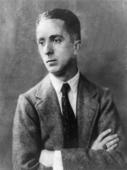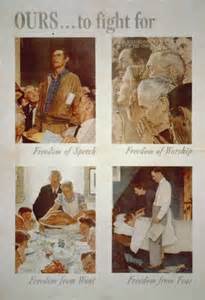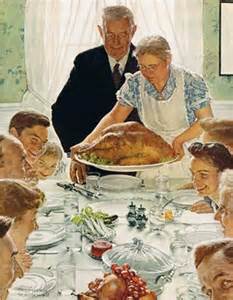Rockwell was born in the waning days of the 19th Century, in 1894, to be exact, in New York City. He had one brother, Jarvis. Their father owned a textile business. A keen art student, Rockwell entered the The New York School of Art when he was 14 and went on to the National Academy of Design and the Art Students League. When he was 19, became the art editor of Boys' Life, a publication of the Boy Scouts of America. His first published magazine cover was "Scout at Ship's Wheel," which appeared in September 1913. The family moved into a studio in New Rochelle, north of New York City, in 1916. Also living in the studio was Clyde Forsythe, a cartoonist who was then working for the Saturday Evening Post, a popular weekly magazine. Rockwell got his first Post cover on May 20, 1916, with "Mother's Day Off." He was 21. Readers and Post editors liked Rockwell's work, and the young artist was soon a regular contributor. This led to covers at other well-known magazines, including Judge, Literary Digest, and Life.
Rockwell's family were often models for his paintings. His first wife, Irene (whom he married in 1916), was the inspiration for the mother in "Mother Tucking Children into Bed," which appeared in Literary Digest in 1921. His son Jarvis was a model for "Saying Grace," a 1951 offering that, in a 2013 auction, earned a record price for an American art auction, at $46 million. He also created memorable illustrations of landmark events, including Charles Lindbergh's solo flight across the Atlantic and Neil Armstrong's stepping onto the Moon's surface. Among his other well-known art works were 51 years of annual contributions to calendars for the Boy Scouts. He also illustrated books, posters, catalogs, sheet music, stamps, playing cards, and walls (creating numerous public murals).
Rockwell then designed art works for Look magazine and for famous people, including Presidents, Eisenhower, Kennedy, John, and Nixon. He received the Presidential Medal of Freedom, the country's highest civilian honor, in 1977. Norman Rockwell died on November 8, 1978, in Stockbridge, Mass. He was 84. A museum in that city has more than 700 of his original art works and commemorates his life, works, and legacy. His third wife, Molly (whom he married in 1961), survived him, as did his three children, Jarvis, Thomas, and Peter. |
|
Social Studies for Kids
copyright 2002–2025
David White

 Norman Rockwell created some of America's most iconic art works in a long 20th-Century career. The creator of more than 4,000 art works, he is most known for his paintings that graced the cover of the Saturday Evening Post for 47 years.
Norman Rockwell created some of America's most iconic art works in a long 20th-Century career. The creator of more than 4,000 art works, he is most known for his paintings that graced the cover of the Saturday Evening Post for 47 years. Rockwell enlisted in the U.S. Navy during World War II. He did not see military action; instead, he was named a military artist. He did, during this period, create some eminently recognizable paintings, notably the Four Freedoms series. A set of four, these echoed a speech given by President Franklin D. Roosevelt, and the titles were Roosevelt's Four Freedoms: "Freedom from Want," "Freedom of Speech," "Freedom of Worship," and "Freedom from Fear." The U.S. Treasury included the paintings in a promotion for war bonds.
Rockwell enlisted in the U.S. Navy during World War II. He did not see military action; instead, he was named a military artist. He did, during this period, create some eminently recognizable paintings, notably the Four Freedoms series. A set of four, these echoed a speech given by President Franklin D. Roosevelt, and the titles were Roosevelt's Four Freedoms: "Freedom from Want," "Freedom of Speech," "Freedom of Worship," and "Freedom from Fear." The U.S. Treasury included the paintings in a promotion for war bonds. Rockwell's wife, May, died in 1959. Along with his son Thomas, Norman Rockwell published his autiobiography, My Adventures as an Illustrator, the following year. Excerpts from this book appeared in the Post, along with Rockwell's paintings, including "Triple Self-Portrait." His last Post cover appeared in 1963.
Rockwell's wife, May, died in 1959. Along with his son Thomas, Norman Rockwell published his autiobiography, My Adventures as an Illustrator, the following year. Excerpts from this book appeared in the Post, along with Rockwell's paintings, including "Triple Self-Portrait." His last Post cover appeared in 1963.
